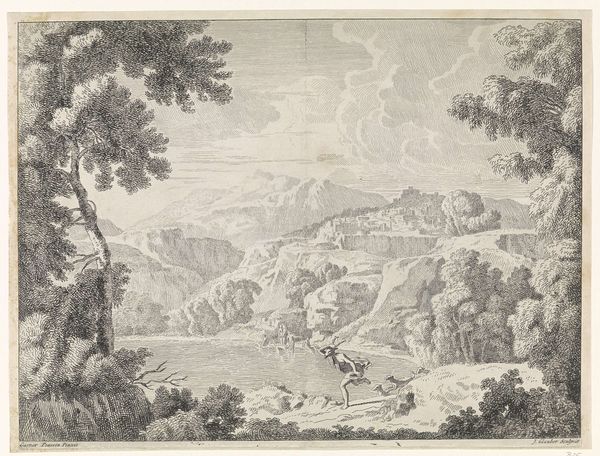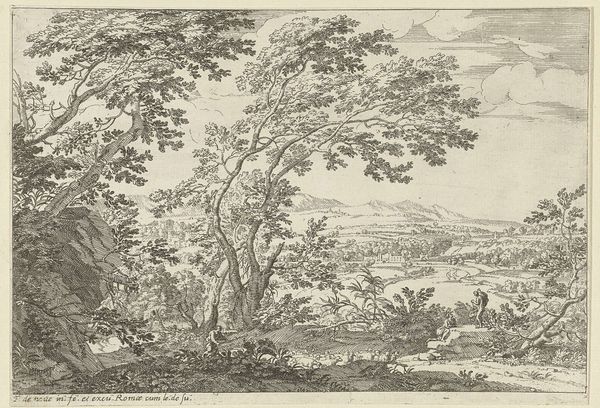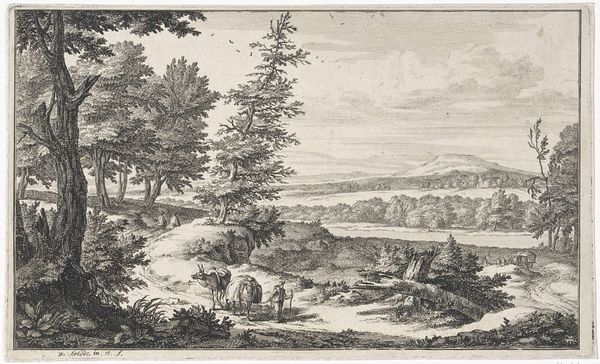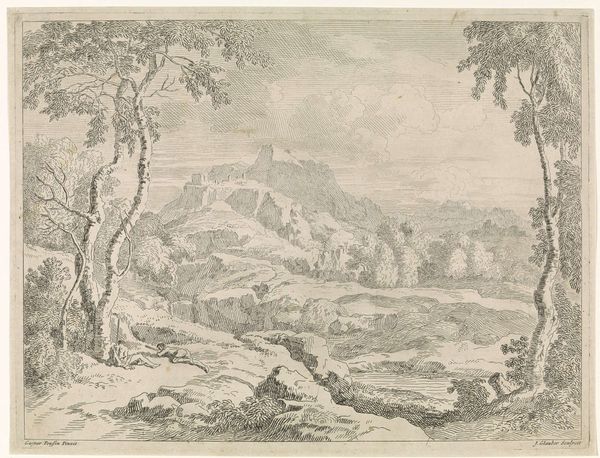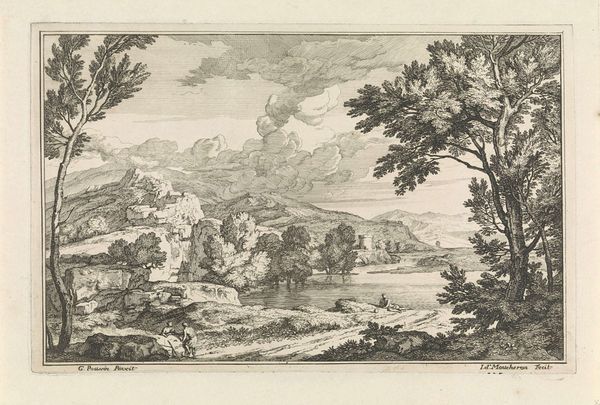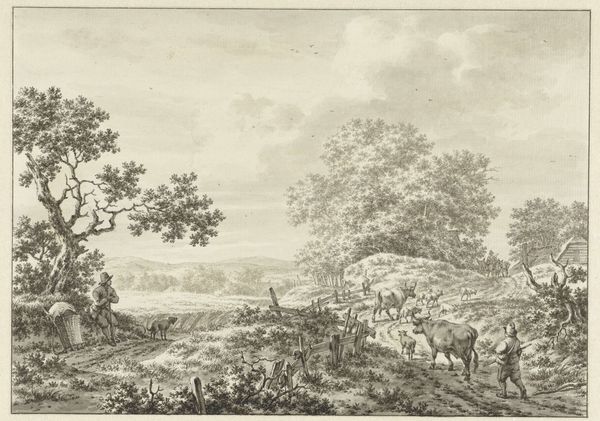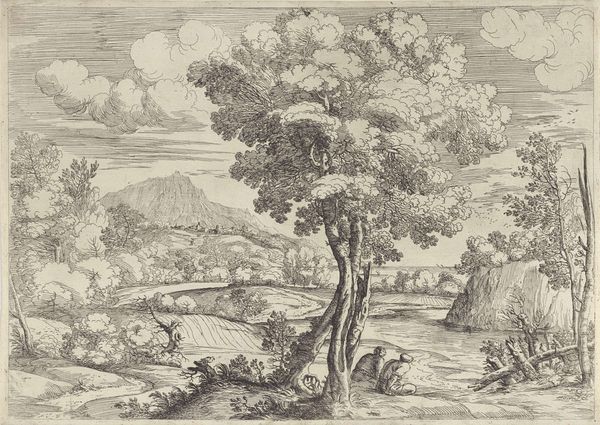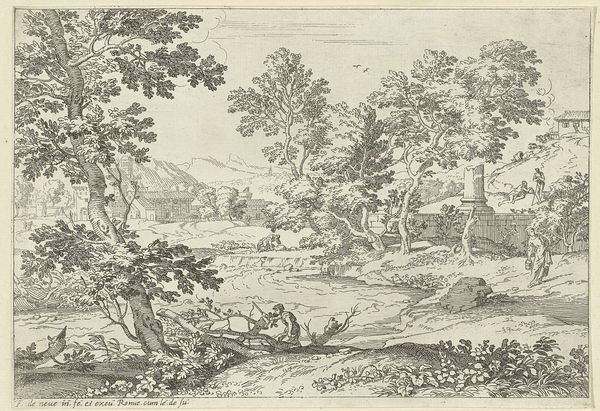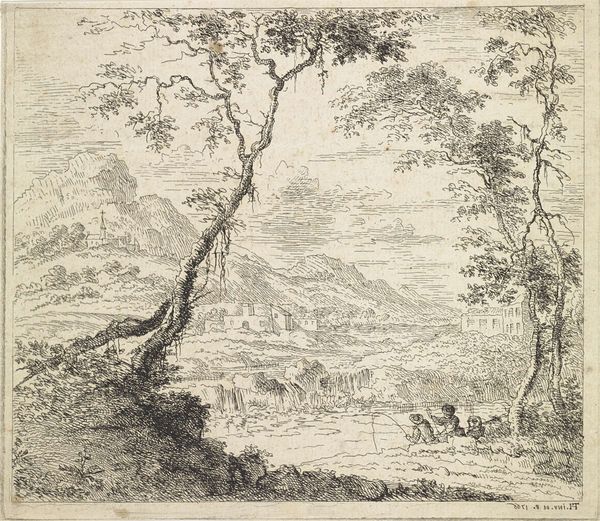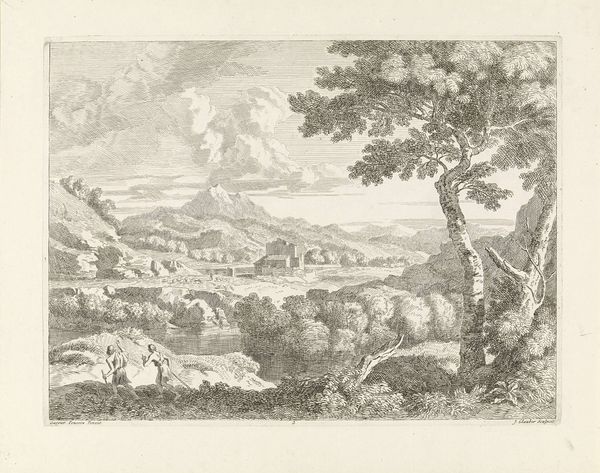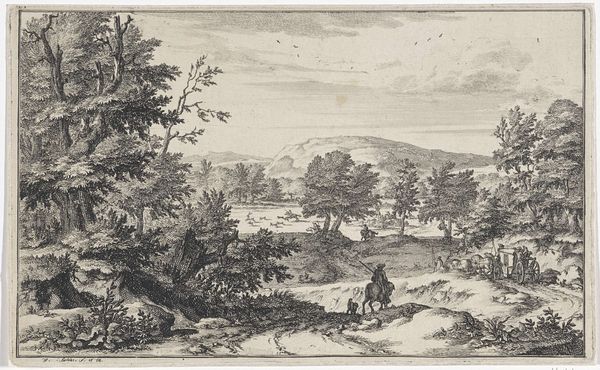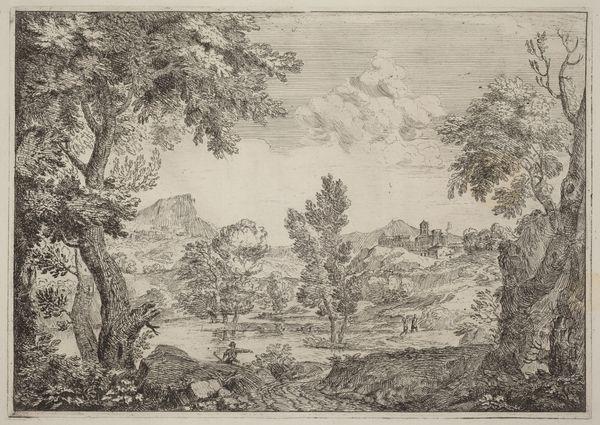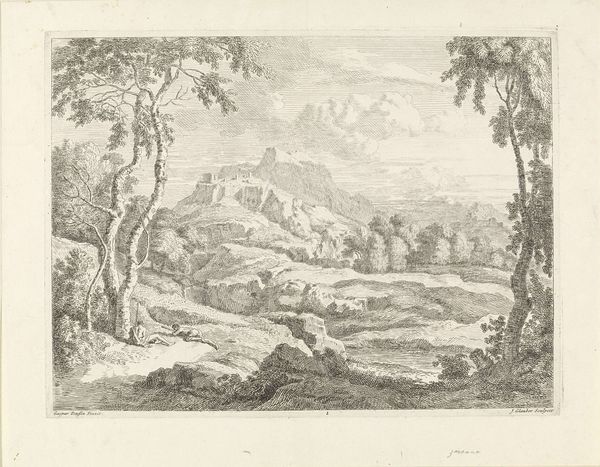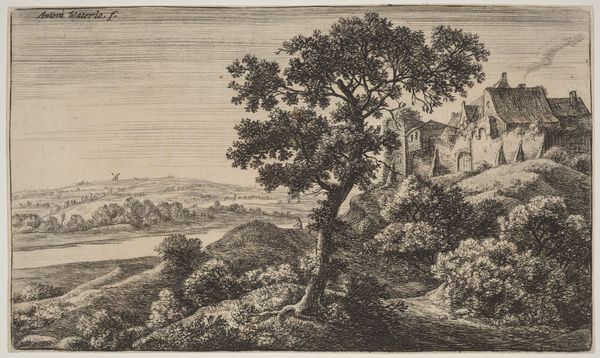
etching
#
baroque
#
etching
#
landscape
#
etching
#
history-painting
Dimensions: height 301 mm, width 395 mm
Copyright: Rijks Museum: Open Domain
Editor: So, this is "Hilly Landscape with Shepherds," an etching made sometime between 1656 and 1726 by Johannes Glauber. I’m struck by how timeless it feels, even though it’s so detailed. What stands out to you the most when you look at this piece? Curator: The presence of the shepherds immediately activates a symbolic register, doesn’t it? They represent an arcadian ideal, a yearning for simpler times. Notice how small they are within the landscape – they are visually subservient to the overwhelming forces of nature. How does that dynamic speak to you? Editor: That makes a lot of sense. It's almost as if they’re a reminder of humanity’s small place in the grand scheme. I hadn't considered that they might also reflect the way that an audience at that time considered these figures. Do you think viewers then connected with this artwork as much as they connected with the shepherds in their everyday lives? Curator: That's a keen insight. Perhaps the image resonates not just with an idea of rural simplicity, but also with the very real and daily experiences of much of the population. The detailed landscape, coupled with these figures, creates a visual memory. There's a tension, wouldn’t you agree, between an idealized scene and a reflection of daily toil? Editor: Definitely. It makes me consider how art serves both to romanticize and document lived experience. The symbol becomes intertwined with the everyday, reflecting cultural continuity. I'll think differently about this now! Curator: Indeed. Every element speaks and layers into a powerful commentary on nature, man, and memory.
Comments
No comments
Be the first to comment and join the conversation on the ultimate creative platform.
